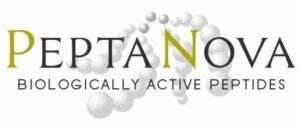Urotensin II (Human)
4365-v 0.5 mg | 140.00 EUR
Glu – Thr – Pro – Asp – Cys – Phe – Trp – Lys – Tyr – Cys – Val
| (M.W. 1388.6) | C64H85N13O18S2 | [251293-28-4] |
Synthetic Product Hydrochloride Form (Disulfide bond between Cys5– Cys10)
This compound has some inherent instability. The purity is guaranteed to be higher than 97% by HPLC
A novel vasoconstrictor peptide with greater potency than endothelin-1
The caudal neurosecretory system of teleost fish, which terminates in the urophysis, exhibits morphofunctional similarities to the hypothalamoneurohypophysial complex. Two major regulatory peptides have been isolated from urophysial extracts and chemically characterized. Urotensin I (U-I) is a 41-amino acid residue peptide with vasodepressor effect. Urotensin II (U-II) is a cyclic 12-amino acid residue peptide with smooth muscle contractile activities in fish.
Recently, a peptide having sequence similarity with fish U-I, called urocortin, has been characterized in the rat brain [Nature, 378, 287 (1995)]. Urocortin has been found to serve as a ligand for type-2 corticotropin-releasing factor. However, the existence of U-II has not been reported in mammals. In 1998, the precursor of human U-II and the localization of the corresponding mRNA has been reported [Proc. Natl. Acad. Sci. USA, 95, 15803 (1998)]. This mRNA is found predominantly in the spinal cord. In situ hybridization studies showed that the U-II precursor gene is actively expressed in motoneurons.
According to the very recent report, human U-II is a potent vasoconstrictor and agonist for the orphan receptor GPR14 [Nature, 401, 282 (1999)]. The potency of vasoconstriction of U-II is an order of magnitude greater than that of endothelin-1, making human U-II the most potent mammalian vasoconstrictor identified so far. Human U-II markedly increases total peripheral resistance associated with profound cardiac contractile dysfunction in anesthetized nonhuman primates. As U-II immunoreactivity is also found within central nervous system and endocrine tissue, this peptide may exert important physiological functions in humans.
References:
- Y. Coulouarn, I. Lihrmann, S. Jegou, Y. Anouar, H. Tostivint, J.C. Beauvillain, J.M. Conlon, H.A. Bern and H. Vaudry, Proc. Natl. Acad. Sci. USA, 95, 15803 (1998) (Original)
- R.S. Ames, H.M. Sarau, J.K. Chambers, R.N. Willette, N.V. Aiyar, A.M. Romanic, C.S. Louden, J.J. Foley, C.F. Sauermelch, R.W. Coatney, Z. Ao, J. Disa, S.D. Holmes, J.M. Stadel, J.D. Martin, W.-S. Liu, G.I. Glover, S. Wilson, D.E. McNulty, C.E. Ellis, N.A. Elshourbagy, U. Shabon, J.J. Trill, D.W.P. Hay, E.H. Ohlstein, D.J. Bergsma, and S.A. Douglas, Nature, 401, 282 (1999) (Pharmacol.)
For Laboratory use only! Not for Drug Use!

